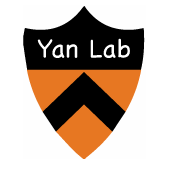A Glimpse of Membrane Transport through Structures-Advances in the Structural Biology of the GLUT Glucose Transporters
Type
The cellular uptake of glucose is an essential physiological process, and movement of glucose across biological membranes requires specialized transporters. The major facilitator superfamily glucose transporters GLUTs, encoded by the SLC2A genes, have been a paradigm for functional, mechanistic, and structural understanding of solute transport in the past century. This review starts with a glimpse into the structural biology of membrane proteins and particularly membrane transport proteins, enumerating the landmark structures in the past 25years. The recent breakthrough in the structural elucidation of GLUTs is then elaborated following a brief overview of the research history of these archetypal transporters, their functional specificity, and physiological and pathophysiological significances. Structures of GLUT1, GLUT3, and GLUT5 in distinct transport and/or ligand-binding states reveal detailed mechanisms of the alternating access transport cycle and substrate recognition, and thus illuminate a path by which structure-based drug design may be applied to help discover novel therapeutics against several debilitating human diseases associated with GLUT malfunction and/or misregulation.

